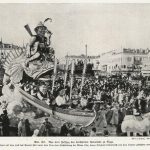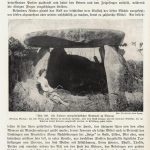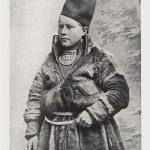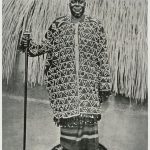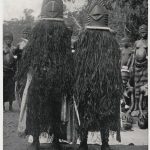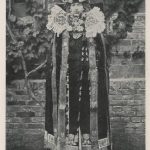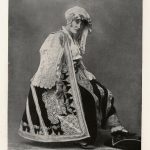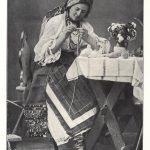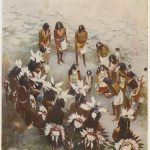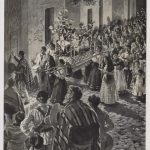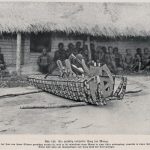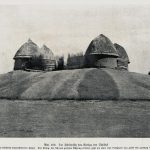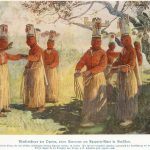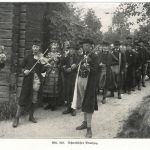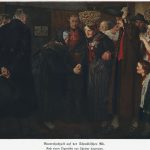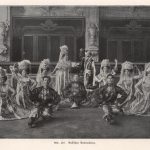One of the factors that led to Germany’s rise in Europe in the late 19th century was its pre-eminence in many fields of science. This was true not only in the natural sciences, but also in the social sciences, where German scholars and explorers contributed to the creation of a new field: Anthropology. As German researchers spread out around the world, recording their contacts with both familiar as well as lesser-known cultures, they laid the groundwork for this new discipline.
The book cover pictured here is that of the four-volume series “Die Sitten der Voelker” (The Peoples of the World and their Customs) by Dr. Georg Buschan that was published in 1914.
The cover art of this book evokes the “exotic” lands and cultures that this work covers.
From left to right:
This picture shows a float from the Carneval (Mardi Gras) celebration in Nice, France. This tradition is celebrated primarily in Catholic parts of Germany and represents a final celebration before the start of Lent, when fasting and prayer are the order of the day.
This picture shows a “Dolmen”, a prehistoric grave site, in Barozza, Italy. According to local tradition, if a young woman about to be married sits in the shade of the stones and makes a wish about her future, it will be granted her.
Pictured here is a woman from Lapland in clothing made of animal pelts.
Pictured here is the chief of the Yakun tribe of the Sudan in formal robes.
Pictured here are two female members of the Bundu Order second class, who serve as shamans or medical practitioners in their tribe in West Africa. They are wearing the mask and clothing that they must put on in order to practice their arts as “Bundu Devils”.
Pictured here is a young woman from Bueckeburg, in the Lower Saxony region of Germany. She is dressed in traditional wedding attire, which is often the same piece passed down for generations.
Pictured here is a young woman from Serbia in colorful traditional clothing.
Pictured here is a woman from the Siebenbuerger Mountains of Romania in the traditional clothing of this region.
This picture shows the “Flute Ceremony” of the Hopi tribe in North America. This ceremony, also known as “Lenya” can last as long as nine days.
Pictured here is a Mexican Christmas tradition, a ceremonial parade that stops at a residence and asks for shelter for Mary and Joseph, the parents of Jesus.
Pictured here is a highly decorated casket used by the Mongo tribe of the Congo region of Africa. After the deceased has been washed by family members or slaves, the body is kept in a hut for at least a month. Then, the body is placed in the decorative casket and paraded through the village, accompanied by song and dance.
Pictured here is the royal residence of the King of the Shilluk tribe in East Africa. The hill on which these buildings rest was artificially built. The King rarely leaves the compound with his body guard of between 12 and 20 men.
Pictured here are masked ceremonial dancers of the Opaina tribe of Brazil in the region near the Apaporis River.
This photograph shows a Swedish bridal procession of the 19th century.
This picture shows a wedding in a farming community in the German region of Swabia. The painting was done by Theodor Lauxmann.
This picture is titled “Choosing a Bride on Christmas Eve”. The text reads: “In some Russian villages it is a custom, that young women who wish to marry go to the house of the oldest person in the village on Christmas Eve. They all take a seat next to one another and are covered with a large cloth. Then, the young men of the village who wish to marry enter the house one at a time. If they bow before one of the young women, the elder raises the cloth and the young couple are considered engaged. However, the young couples usually arrange a sign of some sort in advance, so that the young man can recognize the women he wishes to select before the veil is raised.”
This photograph shows a Russian folk dance troupe performing the Russian National Dance.


